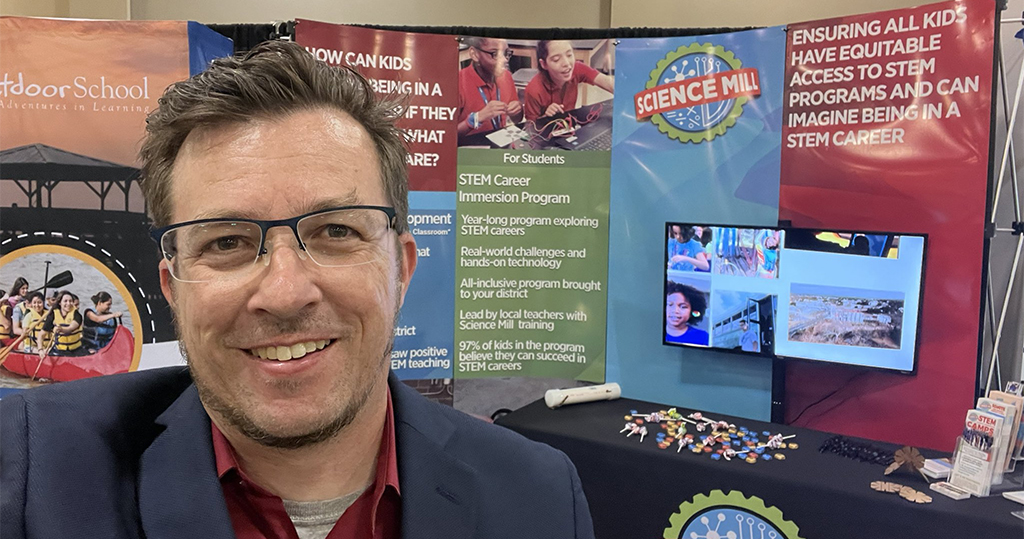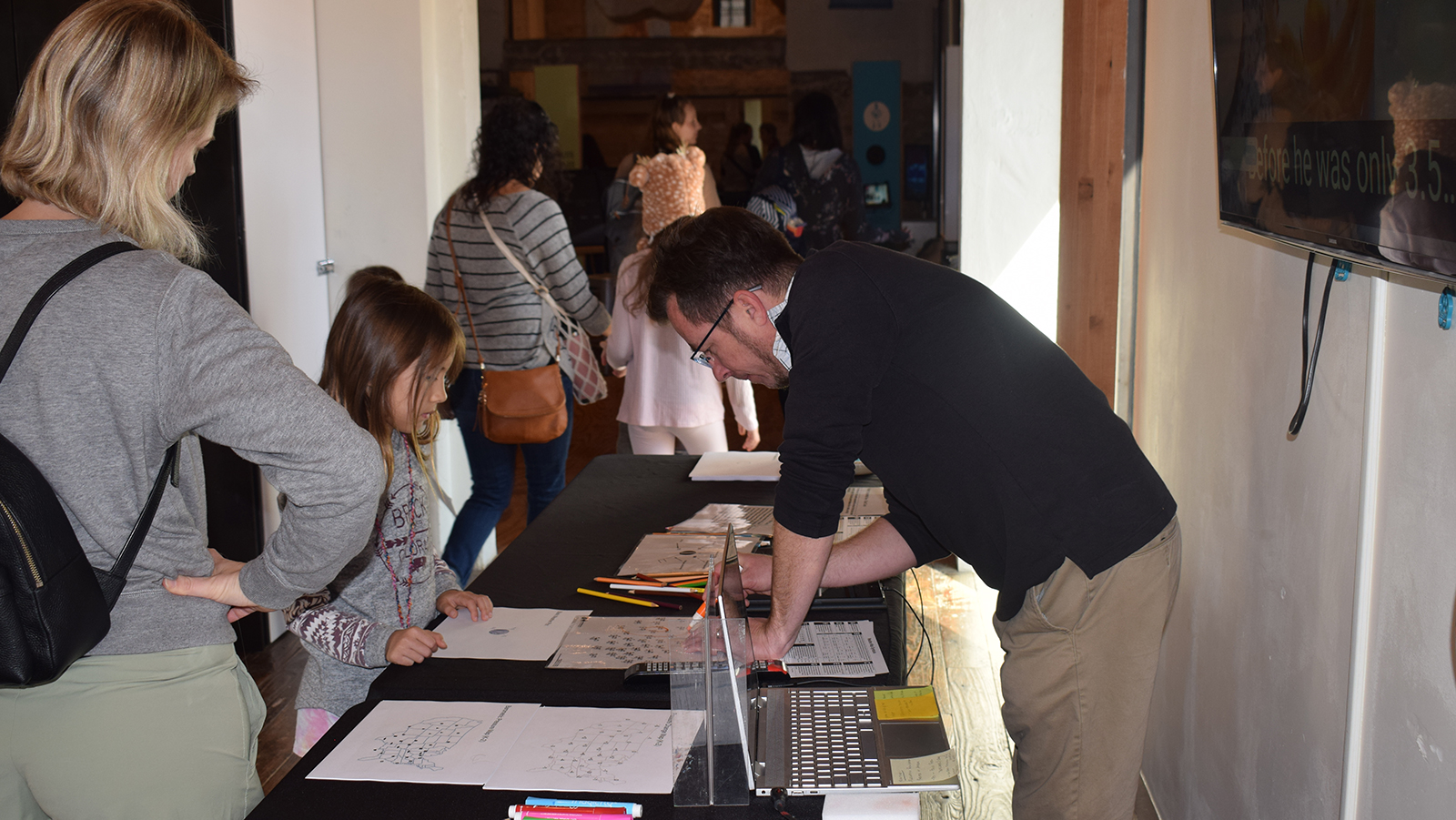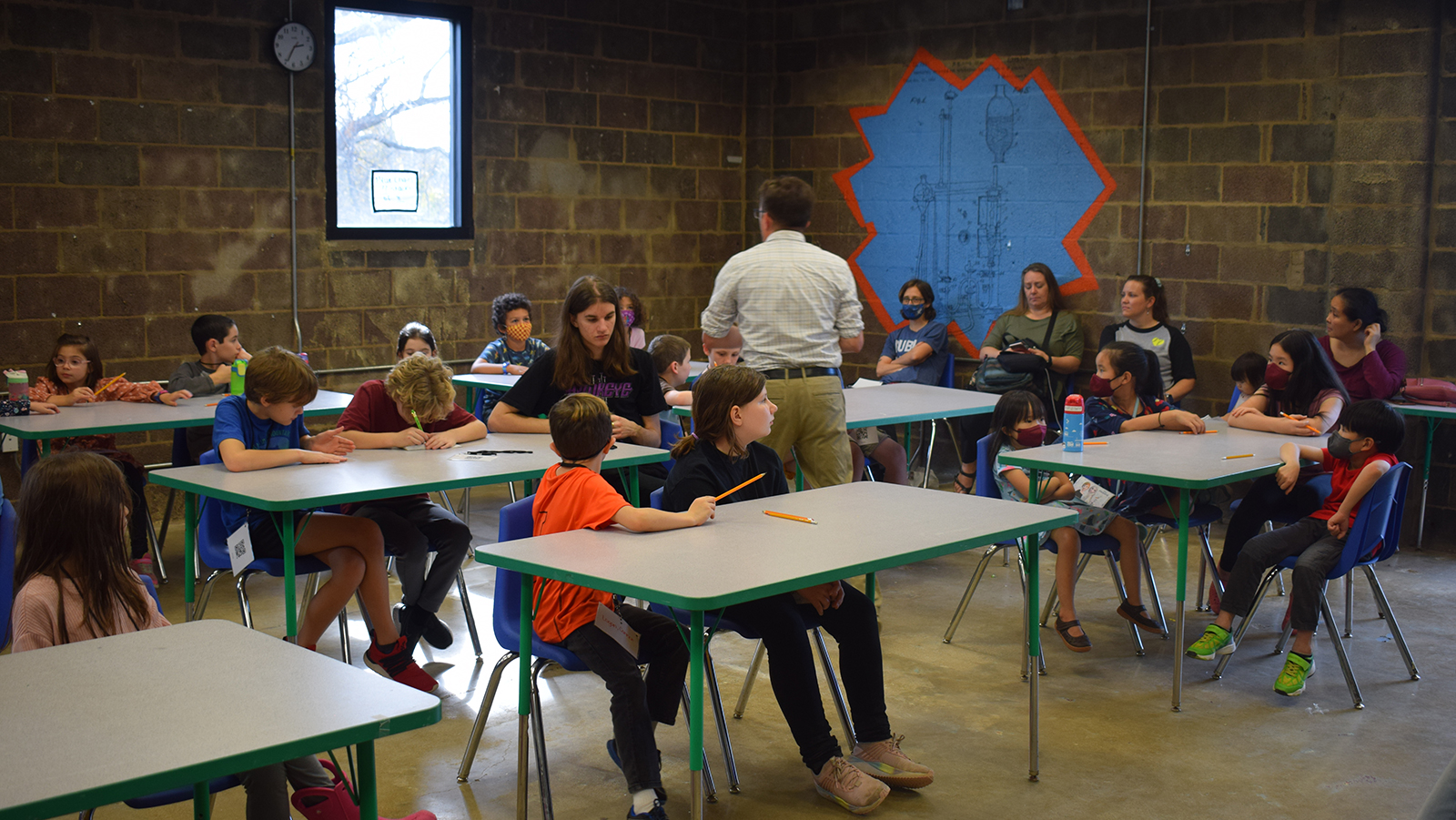
Interview: Jeff Wheatcraft from the Science Mill
From swing dancing to art education to astronomy, Jeff Wheatcraft has always had an adventurous and curious spirit. So it comes as no surprise that in his capacity as a middle-school science teacher, he has used his creative background to develop an engaging teaching style that involves hands-on STEM activities in the classroom. In 2019, Wheatcraft was named Texas Teacher of the Year in recognition of his efforts.
Wheatcraft continues this innovative approach to STEM engagement in his current role as director of STEM education growth at the Science Mill in Johnson City, Texas. When he learned about the upcoming eclipse passing through Johnson City on April 8, he saw an opportunity to engage with his community around the celestial event, as well as to connect with nearby rural communities. Wheatcraft helped develop a mobile STEM experience that will visit 20 different sites in the months leading up to the eclipse, hosting hands-on activities for people of all ages to learn about the science, culture and impact of eclipses throughout history.
We recently spoke with Wheatcraft about his ongoing love for science and his role at the Science Mill. The transcript below has been edited for clarity and brevity.
Hi, Jeff. Can you tell us a little bit about yourself?
I’ve been at the Science Mill for almost two years. Before that I was a teacher for nearly 16 years. I mainly taught middle-school science, where I developed unique STEM programming for students. My programming revolved around the central question of: “How do you engage students with doing hands-on stuff but also working with problems in the real world?” I wanted my students to build things of value to them. I would have them look at a problem, come up with a solution they believed had value, and then build and test it for viability. That kind of thinking is a little bit different from most schools, which got me noticed with some accolades. In San Antonio, Trinity University awards their Trinity Prize to two teachers every year out of 19 districts. I won that award in 2018, and then in 2019, I was named Texas Teacher of the Year.
What is your favorite memory of the sun?
Ah, right, that thing in the sky! My favorite memory would have to be in the eighth grade, when I learned that our sun was a star. I remember walking into my eighth grade science teacher’s classroom, where there was a huge poster that said “Our Star the Sun.” I was really captivated from then on out. The school also bought a telescope with a solar filter, which allowed us to look at the surface of the sun. Within a year I went from not knowing that our sun was a star to looking at the surface, finding sunspots, learning about what sunspots were, how they’re created and how the sun works. When I left eighth grade, I really had this love of learning about science, especially astronomical science.

What has your relationship to science been throughout your life, and how has it changed?
I’ve always been interested in science, but my background is actually in art. I got an undergraduate degree in art education, but I always loved science growing up. My eighth grade science teacher really inspired me to explore science, especially astronomy. In high school, I really wanted to be an astrophysicist or aerospace engineer. But when I was a junior, we had an assignment where we had to write a letter to a university we wanted to attend, to get more information. At the time, I wrote to Arizona State University, because they had a great engineering program. They sent me this huge packet of what my first year courses would look like. I was so excited that I showed my teacher the packet and she told me, “You know, I just don’t know if you’re smart enough to do this.” So instead, my senior year I ended up taking an art elective and really enjoyed painting. But I still loved science. My lecture professor for an astronomy class was actually Jeff Hester, who is one of the people who helped design the Hubble Space Telescope.
After I graduated, I took this ridiculously winding route where I opened a dance studio and competed nationally in swing dancing. But when our family started to grow, I went into teaching. I was told I’d never get a job teaching art. Nobody ever gets jobs teaching art, especially as new teachers. You have to wait until either somebody retires or dies. That was the rule. So I got certified in teaching science and art, and ended up teaching art my first year. The next year there was an opening in the school to teach science. From then on, that’s all I taught for the next 15 years.
How has your background in art education influenced your teaching and your work at the Science Mill?
Most everything we do at the museum has some kind of an artistic or creative component where students get to look at things from a different perspective. When developing most of our floor activities, we really ask ourselves: “What’s the artistic component that students can bring?” That creative ideology is how they can find something they value to bring to the table. This sort of thinking really echoes how I taught in my classroom.
Can you tell us more about the Science Mill?
The founders of the Science Mill retired here in Johnson City, bought a house about four miles from where the mill is physically located, and then they found this empty space with an old grain mill in it. Their mission was always to help students in rural and low-income areas that don’t have access to STEM learning in the same way that urban centers do. When you look at the mission of the mill, it’s for all students, no matter what their background is. We want them to have access to high-quality STEM education.
One way is through the museum itself. Even though we’re in a town of only 1,200 people, last year we reached 70,000 visitors. The other is our educational outreach. We help schools run after-school STEM clubs, and send lab kits directly to schools, where they open a box and in 10 minutes they can do a full STEM lab. Our pinnacle program is our summer camp. We do summer camps across the state of Texas, from as far north as Texarkana all the way down to the Brownsville area. This past summer we did almost 20 sites across Texas.

What is the Science Mill doing around the eclipse?
We are creating a mobile STEM experience that will visit 20 different sites in anticipation of the eclipse. Imagine a 6-foot table that’s broken into four quadrants, and each quadrant has a challenge. The first challenge is learning about shadows and alignment of the sun and moon. The next challenge teaches how ancient civilizations explained celestial events. The third challenge tells different stories and folklore that people have passed down through generations. And then the last one is about current mapping, and how we use maps to predict where eclipses are going to fall. We’re expecting to reach around 3,500 people with this mobile STEM experience, and we’re putting in a lot of effort to make sure we are meeting the needs of different communities. We also send students home with materials to observe the eclipse with glasses and a booklet, to write about things that they see and do, and then we follow up with either a virtual or an in-person visit.
What are you looking forward to in the aftermath of the eclipse?
I’m really looking forward to continuing the connections we’ve made with the schools and communities we will be working with. We try not to look at something as just a one-time event but more of a launching pad. We are really asking ourselves: “How can we build these relationships and integrate them into other parts of the Science Mill? How can we look at this experience and learn and improve for future projects? How can we make that curiosity sparked by the eclipse live out longer than just those few minutes of totality?” I’m really excited to ask those questions and hear everyone’s experiences.
What will you be doing on the day of the eclipse?
I will be at the Science Mill! As soon as the eclipse is over, we’re going to go out into the crowd and engage and teach. One of the groups I met with yesterday is from North Dakota, and they’re going to bring down an art activity that deals with shadows and drawing.
There’s so much we can do with science and art that really pushes the boundaries of how you experience an event like this. It will be a day of observing, teaching, engaging and just witnessing this amazing event.